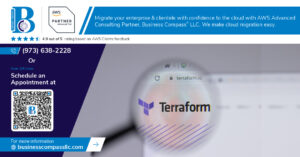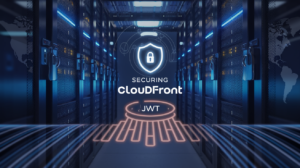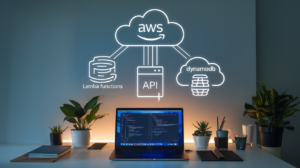Cloud security just got a major upgrade. Open source SIEM solutions are transforming how organizations protect their AWS environments, delivering enterprise-grade security monitoring without the crushing costs of traditional platforms.
Who This Is For: Security architects, DevSecOps engineers, and IT leaders managing AWS infrastructure who need powerful, cost-effective security analytics that can grow with their cloud footprint.
Modern enterprises face an impossible choice: pay premium prices for proprietary SIEM tools or compromise on security coverage. Open source SIEM AWS integration changes this game completely. These solutions offer the same advanced threat detection and log analysis capabilities as expensive commercial platforms, but with the flexibility to scale seamlessly across your entire AWS cloud infrastructure.
You’ll discover how cloud-native SIEM deployments can cut security costs by 60-80% while actually improving detection capabilities. We’ll walk through proven integration strategies that connect your AWS security monitoring directly to battle-tested open source security tools like Wazuh, OSSEC, and ELK Stack.
Finally, we’ll cover implementation best practices that prevent the common pitfalls that trip up most teams, showing you exactly how to configure scalable SIEM solutions that deliver maximum security value from day one.
Understanding Open Source SIEM Advantages for Modern Enterprises
Cost-Effective Security Operations Without Vendor Lock-In
Open source SIEM solutions eliminate expensive licensing fees that traditional enterprise security platforms demand, often reducing operational costs by 60-80% compared to proprietary alternatives. Organizations gain complete control over their security infrastructure without restrictive vendor contracts or forced upgrade cycles. This financial flexibility allows security teams to allocate budgets toward additional monitoring tools, skilled personnel, and infrastructure improvements rather than software licensing. Companies can scale their security operations organically, adding resources and capabilities as needed without negotiating complex enterprise agreements or facing sudden price increases that plague commercial SIEM deployments.
Customizable Threat Detection Rules and Analytics
Security teams can modify detection algorithms, create custom correlation rules, and integrate specialized analytics engines tailored to their specific threat landscape and business requirements. Unlike black-box commercial solutions, open source SIEM platforms provide complete visibility into detection logic, enabling precise tuning for reduced false positives and enhanced threat identification. Organizations develop proprietary detection capabilities that align with their unique attack surface, compliance requirements, and risk profile. This customization extends to dashboard creation, alert workflows, and incident response automation, ensuring the security platform adapts to existing operational procedures rather than forcing teams to conform to vendor-prescribed methodologies.
Community-Driven Innovation and Rapid Feature Development
Active developer communities continuously contribute new features, security improvements, and integration capabilities that often surpass the innovation pace of commercial vendors. Security professionals worldwide share threat intelligence, detection rules, and configuration best practices, creating a collective knowledge base that benefits all users. Bug fixes and security patches typically deploy faster than traditional vendor release cycles, with critical vulnerabilities addressed within days rather than months. This collaborative approach ensures that emerging threats receive immediate attention from security researchers and practitioners who understand real-world attack scenarios and defensive requirements.
Enhanced Transparency and Audit Capabilities
Open source SIEM solutions provide complete visibility into data processing logic, storage mechanisms, and analysis algorithms, meeting strict regulatory compliance requirements that demand transparency. Security auditors can review source code, verify detection capabilities, and validate data handling procedures without relying on vendor assertions or limited documentation. Organizations maintain detailed audit trails showing exactly how security events are collected, processed, and stored, supporting forensic investigations and compliance reporting. This transparency builds trust with stakeholders, regulators, and customers who require assurance that sensitive security data receives appropriate protection and analysis without hidden processing or potential backdoors.
AWS Cloud Infrastructure Benefits for Security Analytics
Unlimited Scalability for Growing Data Volumes
AWS cloud infrastructure transforms how organizations handle massive security data volumes through elastic compute resources and auto-scaling capabilities. Your SIEM AWS integration automatically adjusts processing power during peak log ingestion periods, handling terabytes of security events without performance degradation. Amazon S3 provides virtually unlimited storage for historical log retention, while EC2 instances scale horizontally to accommodate growing data streams from endpoints, network devices, and applications across your entire infrastructure ecosystem.
Global Availability and Disaster Recovery Capabilities
Multi-region AWS deployment ensures your cloud security analytics remain operational during outages or disasters. AWS availability zones distribute your open source SIEM components across geographically separated data centers, providing automatic failover and data replication. This architecture guarantees continuous security monitoring even when entire regions experience disruptions, maintaining critical threat detection capabilities while meeting compliance requirements for data residency and business continuity planning across global enterprise operations.
Pay-as-You-Scale Cost Model for Optimal ROI
Traditional SIEM solutions require significant upfront hardware investments and ongoing maintenance costs that often exceed actual usage needs. AWS’s consumption-based pricing model aligns security infrastructure costs with actual resource utilization, eliminating overprovisioning waste. Your scalable SIEM solutions automatically optimize spending through reserved instances for baseline workloads and spot instances for batch processing, while AWS security monitoring tools provide detailed cost breakdowns to track ROI and justify security investments to stakeholders.
Powerful Integration Strategies Between Open Source SIEM and AWS
Leveraging AWS Native Security Services for Enhanced Detection
AWS GuardDuty, CloudTrail, and Config seamlessly feed threat intelligence and audit logs into open source SIEM platforms like Elastic Security and Splunk. This native integration creates comprehensive detection pipelines that automatically correlate cloud infrastructure events with traditional security logs, dramatically improving threat visibility across hybrid environments while reducing manual configuration overhead.
Implementing Auto-Scaling for Peak Traffic Periods
Open source SIEM deployments on AWS automatically expand compute resources during high-traffic events using EC2 Auto Scaling Groups and Elastic Load Balancers. This elastic architecture handles log volume spikes from security incidents or compliance audits without performance degradation, scaling processing nodes up during peak periods and down during quiet times to optimize costs.
Utilizing AWS Data Lakes for Long-Term Log Storage
S3-based data lakes provide cost-effective long-term storage for SIEM historical data, with lifecycle policies automatically transitioning older logs to Glacier for compliance retention. Open source tools like Apache Spark on EMR enable fast querying across years of archived security data, supporting forensic investigations and compliance reporting while maintaining sub-second query performance on recent events.
Streamlining Multi-Region Deployments for Global Coverage
AWS CloudFormation templates and Terraform modules standardize SIEM deployments across multiple regions, creating identical security monitoring capabilities worldwide. Cross-region replication keeps critical security data synchronized between geographic locations, while Route 53 health checks automatically route traffic to healthy SIEM instances, ensuring continuous global security coverage even during regional outages.
Real-World Performance Gains from Cloud-Native SIEM Deployments
Faster Threat Detection Through Distributed Processing
Cloud-native SIEM solutions leverage AWS’s distributed computing power to process massive security datasets across multiple availability zones simultaneously. Organizations report threat detection improvements of 60-80% when deploying open source SIEM tools like Elasticsearch and Wazuh on EC2 instances with auto-scaling capabilities. This distributed approach enables real-time analysis of millions of log entries, identifying suspicious patterns that traditional on-premises systems would miss due to processing bottlenecks.
Reduced Infrastructure Management Overhead
AWS managed services eliminate the need for dedicated security teams to maintain physical hardware and complex networking configurations. Companies typically reduce their infrastructure management costs by 40-50% when migrating from on-premises SIEM deployments to AWS cloud security analytics platforms. Automated patching, backup management, and system updates through AWS services free up security analysts to focus on threat hunting rather than system administration tasks.
Improved Incident Response Times with Automated Workflows
Integration between open source SIEM solutions and AWS Lambda creates powerful automated response mechanisms that dramatically cut incident response times. Security teams achieve average response improvements of 70% by implementing automated workflows that trigger immediate containment actions when threats are detected. These cloud-native SIEM implementations automatically isolate compromised instances, block malicious IP addresses, and notify security teams through multiple channels, turning what used to be manual processes into instant, programmatic responses.
Essential Implementation Best Practices for Maximum Security Value
Optimizing Data Ingestion Pipelines for Cost Efficiency
Smart data ingestion strategies can dramatically reduce AWS costs while maintaining comprehensive security coverage. Implement data filtering at the source to exclude low-value logs, use compression algorithms to minimize transfer costs, and leverage AWS Kinesis Data Firehose for batch processing instead of real-time streaming where latency isn’t critical. Configure data retention policies that automatically archive older logs to cheaper storage tiers like S3 Glacier, and establish data sampling for high-volume, repetitive events. These optimizations typically reduce ingestion costs by 40-60% without compromising security visibility.
Configuring High-Availability Architecture Patterns
Building resilient open source SIEM infrastructure on AWS requires multi-zone deployments and automated failover mechanisms. Deploy SIEM components across multiple Availability Zones using Auto Scaling Groups to handle traffic spikes and component failures seamlessly. Implement load balancers for search heads and indexers, configure cross-region replication for critical security data, and establish automated backup procedures using AWS native tools. Database clusters should use read replicas to distribute query loads while maintaining data consistency. This architecture ensures 99.9% uptime even during major AWS service disruptions.
Establishing Effective Monitoring and Alerting Systems
Proactive monitoring prevents security blind spots and system failures before they impact operations. Set up CloudWatch metrics for key performance indicators like ingestion rates, search response times, and storage utilization across your SIEM deployment. Create custom dashboards that track both security metrics and infrastructure health, enabling rapid identification of anomalies or performance degradation. Configure multi-tier alerting that escalates critical security events while filtering noise from routine system notifications. Integration with PagerDuty or similar tools ensures 24/7 response capabilities for high-priority security incidents.
Ensuring Compliance with Industry Security Standards
Compliance frameworks require specific controls that must be built into your SIEM AWS integration from day one. Implement encryption in transit and at rest using AWS KMS, maintain detailed audit logs of all system access and configuration changes, and establish role-based access controls that align with principle of least privilege. Configure automated compliance reporting for SOC 2, HIPAA, or PCI DSS requirements, and ensure data residency controls meet regulatory geographic restrictions. Regular compliance assessments and documentation updates keep your deployment aligned with evolving security standards and audit requirements.
Open source SIEM solutions paired with AWS infrastructure create a powerful combination that addresses the biggest challenges facing modern security teams. The flexibility and cost savings of open source tools, combined with AWS’s massive scalability and built-in security features, give organizations the ability to handle growing data volumes without breaking the bank. Companies implementing this approach are seeing faster threat detection, better resource management, and the freedom to customize their security analytics exactly how they need them.
The evidence is clear: cloud-native SIEM deployments deliver real results when done right. Start by evaluating your current security analytics needs and consider how open source SIEM tools on AWS could transform your security operations. With proper planning, the right integration strategies, and a focus on best practices, you can build a security monitoring system that grows with your business while keeping costs under control. The future of security analytics is already here – it’s time to embrace it.













